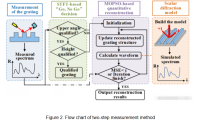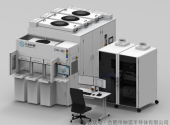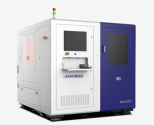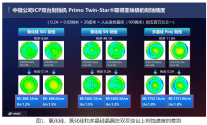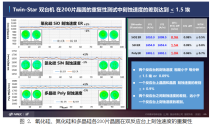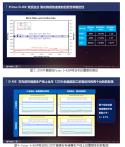To filter out infrared light from the driving light source in the extreme ultraviolet lithography (EUVL) light source system, a rectangular grating structure needs to be fabricated on the surface of the collection mirror. However, the collection mirror grating usually undergoes deformation during the manufacturing process, resulting in a decrease in filtering efficiency. The process errors of grating height and upper base angle need to be controlled within ± 13nm and 0.016 °, respectively, which puts extremely high demands on the measurement method. This article proposes a fast and non-destructive measurement method for collecting mirror grating deformation structures to meet their extreme manufacturing requirements.
At present, the most advanced commercial EUV lithography machines use laser generated plasma light source systems. In this system, a driving laser from the infrared (IR) band strikes the droplet tin target twice, causing complete ionization and generating EUV radiation. After being collected and reflected by the collection mirror, EUV radiation is focused onto the central focal point to enter the subsequent optical system.
However, in the process of collecting and focusing EUV, IR light from the driving laser is usually introduced. The energy of IR light is extremely high and will propagate along the entire EUV lithography system until it reaches the surface of the wafer. This not only causes damage to optical components, but also results in severe optical distortion and decreased pattern accuracy in the final lithography pattern. In order to filter out IR, a rectangular grating needs to be fabricated on the collection mirror substrate to diffract IR from the 0th order to higher orders, and a diaphragm is used to block the high-order diffracted light, as shown in Figure 1 (a). However, rectangular shapes are prone to deformation during the manufacturing process, resulting in asymmetric trapezoidal structures, as shown in Figure 1 (b), which reduces the infrared filtering capability of the grating. Therefore, it is necessary to analyze the deformation structure of the collection mirror grating to determine its tolerance range, and establish a model to achieve fast and accurate non-destructive measurement.

Measurement model of EUV collection mirror grating deformation structure (core content of the article)
Recently, Lin Nan's team from the Chinese Academy of Sciences Shanghai Institute of Optics and Mechanics proposed a fast and accurate nondestructive measurement method for the deformed structure of EUV collecting mirror grating. The article first establishes an efficient and accurate scalar diffraction model for collecting deformation analysis of mirror gratings, targeting the deformation structure of gratings. Secondly, propose a two-step measurement method. The first step is to quickly screen whether the key dimension parameters of the grating meet the tolerance requirements; The second step is to quantitatively reconstruct the size parameters of the gratings selected as unqualified. This method provides a new solution for the inverse scattering problem in collecting mirror grating measurements. It does not require complex numerical calculations and dependence on large datasets, while still providing accurate measurement results, which is beneficial for achieving online non-destructive measurement of collecting mirror grating structures.
The results were published in Optics and Lasers in Engineering (Yunyi Chen, Zexu Liu, Nan Lin. Computational metrology method of collector mirror for EUV lithography [J]. Optics and Lasers in Engineering 189 (2025) 108946).
A scalar diffraction model was established for the common deformation structure of the collection mirror grating (i.e., asymmetric trapezoidal structure) to achieve tolerance analysis in order to obtain a reflectance size with IR less than 0.2%. Compared to the vector diffraction method, this model has a computational speed increase of nearly 5 orders of magnitude, and its normalized root mean square error is only on the order of 10-3. The analysis results indicate that the height and top tilt angle of the grating have a significant impact on the IR reflectivity, with a tolerance of ± 13 nm for height and only 0.016 ° for top angle.
To meet the extreme measurement requirements of collecting mirror gratings, a two-step measurement model based on optical scattering method is proposed, as shown in Figure 2. This model reconstructs the zero order and ± one order of the grating as measurement signals. The first step is to establish a "Go, No Go" model based on short-time Fourier transform (STFT), and detect whether the key size parameters of the grating meet the tolerance requirements by analyzing the spectral mutation positions and numbers in the time-frequency diagram. Qualified gratings will no longer undergo quantitative reconstruction, thereby reducing unnecessary calculations. Under the condition of a signal-to-noise ratio of 500:1, the model can achieve an accuracy of 91.3%, as shown in Figure 3 (a), and improve the overall model efficiency by at least one order of magnitude. In the second step, an improved multi-objective particle swarm optimization (MOPSO) model was further established for the detection of non-conforming gratings to achieve quantitative reconstruction of key dimensional parameters of the gratings. Under the same noise environment, the relative error of the reconstructed height of the model is only 0.19%, and the relative error of the vertex angle is only 0.84%, as shown in Figures 3 (b) and (c). The results fully meet the tolerance requirements of the collection mirror grating.

